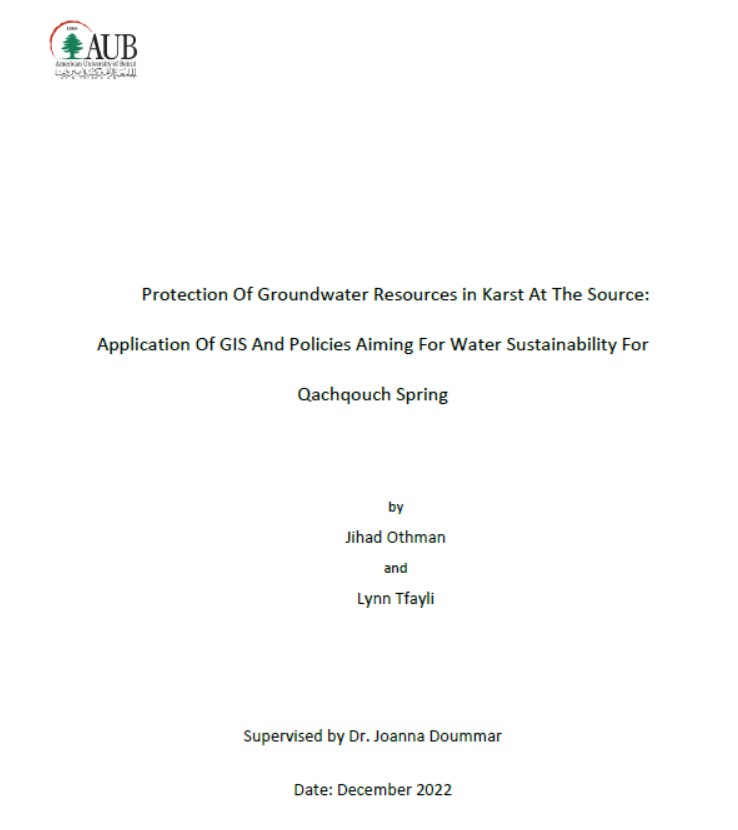Protection of Groundwater Resources in Karst at The Source: Application of GIS and Policies Aiming for Water Sustainability for Qachqouch Spring
 |
rapport Dec 2022 ; 20 pages
Aut. Lynn Tfayli & Jihad Othman
Ed. AUB - Beirut
Téléchargeable sous format: PdF
Abstract:
Freshwater resources are under unprecedented threats because of the increase in population, contamination, and climate change constraints; particularly karst aquifers. The estimation of recharge and assessment of vulnerability in these systems have become primordial to ensure their sustainable use. The forecasting and management of water availability and protection of water resources in the future can be better achieved with tools such as GIS. APLIS and COP methods are GIS-based methods generated to estimate distributed recharge and assess vulnerability respectively, taking into consideration the spatial distribution of all karstic and non-karstic features. The main parameters affecting the APLIS method are “Altitude”, “sloPe”, “Lithology”, “Infiltration”, and “Soil”, while the COP method is accounting for all the karstic and non-karstic parameters of Autogenic and allogenic surface zones respectively represented by the “Concentration”, the “overlying”, and the “Precipitation” with many sub-factors for each.
These two methods have been applied to the Qachqouch spring which is one of the main sources of water supply to Beirut’s citizens that should be protected against contamination. Results show the spatial distribution of recharge and vulnerability with maps of resolution of 30×30 m of each cell. The underestimation of recharge using APLIS is linked to the over flooding of surface water after heavy rain events.
However, the percentage of high recharge area is high and explains the dominant fast infiltration due to karst surface and subsurface features. Also, the resultant map of the COP method was highly affected by the concentration factor that takes into account karstic features such as stream sinkholes, dolines, faults, and the distance of every cell from each of the features. Contents:
Table of contents . 2
List of Figures . 2
List of Tables . 3
Abstract . 4
Acknowledgment . 5
Introduction . 6
The Study Area: Qachqouch Spring . 7
Methodology . 8
APLIS Method . 8
COP method . 10
Results . 12
Application to Policy . 14
Discussion of A Possible Solution . 15
Conclusion . 16
References . 18
Public-Cible:
Mots clefs: |
gestion de la ressource en eau (CI) (DT) (OP) (ope) , hydrogéologie (CI) (DT) (OP) (ope) |
Pays concerné: |
Editeur/Diffuseur: |
|
AUB
-
Université Américaine de Beyrouth - Beirut - Liban |
En cas de lien brisé, nous le mentionner à communication@pseau.org